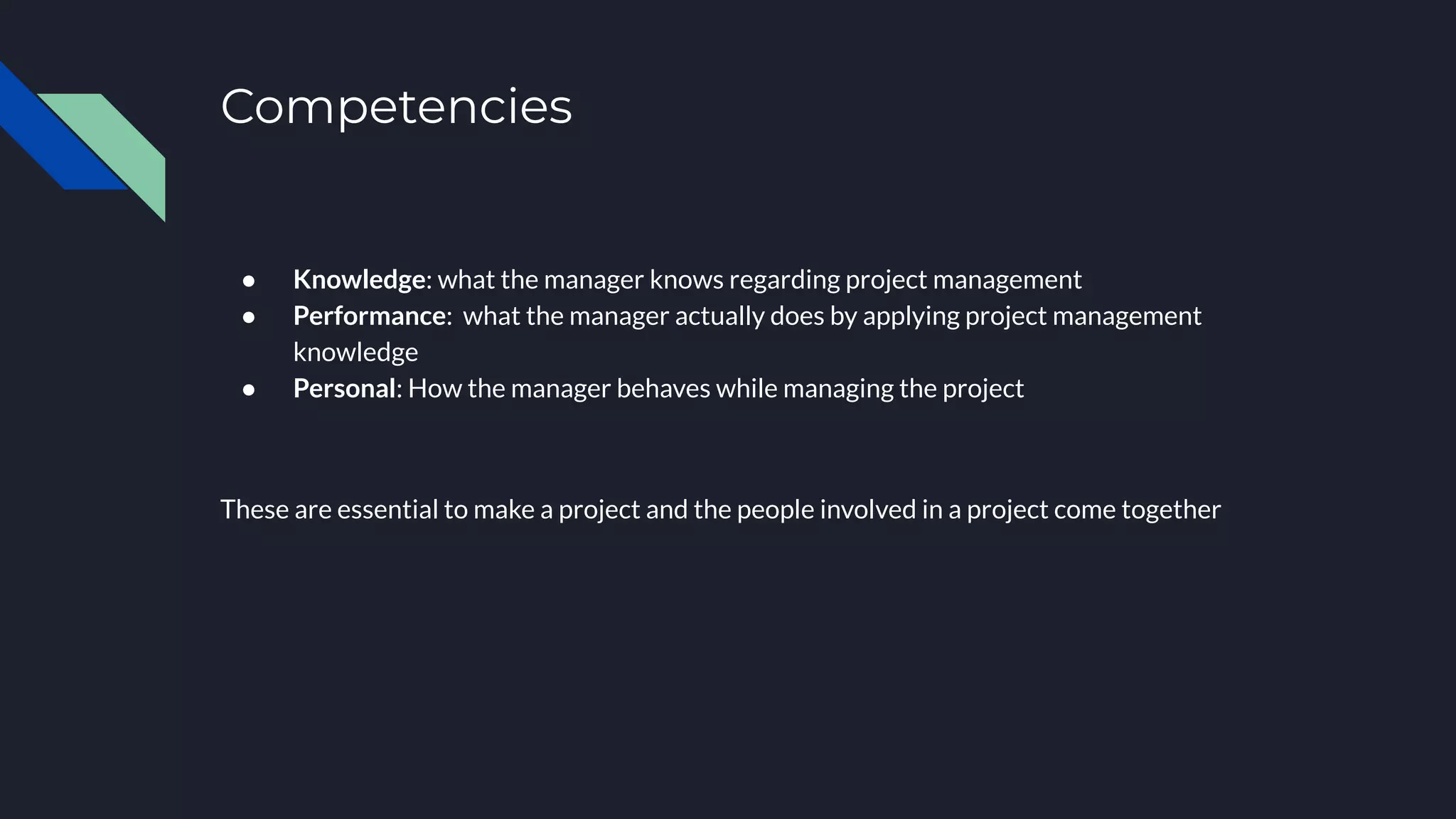This document provides an overview of key concepts in project management including:
1. It describes the project life cycle which consists of initiating, planning, executing, and closing phases that a project passes through.
2. It explains different project management roles like project manager, program manager and portfolio manager and how they relate.
3. It discusses important aspects like the project business case, constraints, stakeholders and how the organizational structure and culture can influence a project.







































































